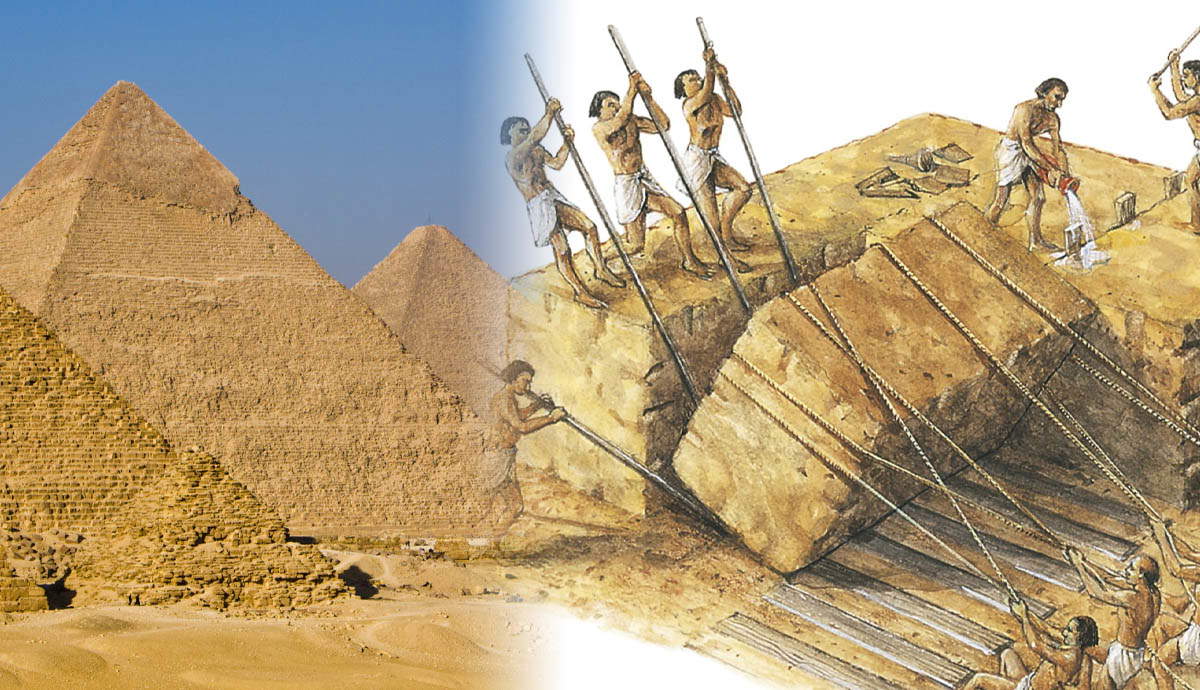
How were the pyramids built? This question has puzzled historians, archaeologists, and curious minds for centuries. The pyramids of Egypt, especially the Great Pyramid of Giza, stand as monumental feats of engineering and human ingenuity. Built over 4,500 years ago, these structures have sparked numerous theories about their construction. Some suggest the use of ramps, while others propose more advanced techniques. Ancient Egyptians relied on a combination of skilled labor, innovative tools, and sheer determination. They used limestone and granite blocks, some weighing as much as 80 tons, transported from quarries miles away. Workers, organized into well-coordinated teams, meticulously placed each stone. Despite modern advancements, the exact methods remain a blend of educated guesses and ongoing research. Ready to uncover more? Let’s dive into 26 fascinating facts about the building of pyramids.
The Origins of Pyramid Building
The construction of pyramids has fascinated historians and archaeologists for centuries. These monumental structures are not just architectural marvels but also hold significant cultural and historical importance.
- The earliest known pyramids were built in Egypt around 2630 B.C. during the Third Dynasty.
- The first pyramid ever constructed was the Step Pyramid of Djoser, designed by the architect Imhotep.
- Pyramids were primarily built as tombs for pharaohs and their consorts.
- The shape of the pyramid is thought to represent the primordial mound from which the Egyptians believed the earth was created.
Construction Techniques and Materials
Building these colossal structures required advanced knowledge of engineering and materials. The methods used have intrigued researchers for years.
- Most pyramids were constructed using limestone, granite, and basalt.
- Workers used copper tools to cut and shape the stones.
- The blocks used in the Great Pyramid of Giza weigh between 2.5 to 15 tons each.
- It is estimated that around 2.3 million blocks were used to build the Great Pyramid.
- Ramps were likely used to move the massive stones into place.
Labor Force and Workforce Organization
The construction of pyramids required a massive workforce and meticulous organization. Understanding how these laborers were managed provides insight into ancient Egyptian society.
- Contrary to popular belief, the pyramids were not built by slaves but by a workforce of skilled laborers.
- These workers were organized into crews of about 2,000 men each.
- Laborers were provided with housing, food, and medical care.
- Workers were often rotated in and out of service to ensure they remained healthy and productive.
Symbolism and Religious Significance
Pyramids were not just tombs but also held deep religious significance for the ancient Egyptians. They were seen as a means to ensure the pharaoh's journey to the afterlife.
- The pyramid's shape is believed to symbolize the rays of the sun.
- Pyramids were often aligned with celestial bodies, particularly the stars in Orion's Belt.
- The interiors of pyramids were decorated with texts and images to guide the pharaoh in the afterlife.
- The capstone, or pyramidion, was often covered in gold to reflect the sun's rays.
The Great Pyramid of Giza
The Great Pyramid of Giza is the most famous and the largest of all the pyramids. Its construction remains one of the greatest architectural feats in human history.
- The Great Pyramid was built for Pharaoh Khufu and completed around 2560 B.C.
- It originally stood at 146.6 meters (481 feet) tall but now is about 138.8 meters (455 feet) due to the loss of the outer casing stones.
- The Great Pyramid was the tallest man-made structure in the world for over 3,800 years.
- It is the only one of the Seven Wonders of the Ancient World still in existence.
Mysteries and Theories
Despite extensive research, many aspects of pyramid construction and purpose remain shrouded in mystery. Various theories have been proposed to explain these enigmas.
- Some theories suggest that the pyramids were built using a lost technology or even with the help of extraterrestrials.
- The exact method of transporting and placing the massive stones remains a topic of debate among scholars.
- The alignment of the pyramids with celestial bodies has led some to believe they were used as astronomical observatories.
- Recent discoveries suggest that the pyramids may have also served as giant water pumps.
Modern Discoveries and Research
Advancements in technology have allowed researchers to uncover new information about these ancient structures. Modern techniques continue to reveal secrets hidden for millennia.
- In 2017, scientists discovered a large void inside the Great Pyramid using muon radiography, a technique that detects changes in density within structures.
The Last Block
Building the pyramids was no small feat. These ancient marvels, with their precise alignments and massive stones, continue to baffle and amaze. From the use of simple tools to the sheer manpower required, the construction methods remain a topic of fascination. The pyramids weren't just tombs; they were symbols of power, religious significance, and architectural genius.
Understanding these facts gives us a glimpse into the ingenuity of ancient civilizations. They remind us of human potential and the lengths people will go to honor their beliefs and leaders. Next time you see a picture of a pyramid, remember the incredible effort and skill that went into creating these timeless structures. They stand as a testament to human determination and creativity, inspiring awe and respect even thousands of years later.
Was this page helpful?
Our commitment to delivering trustworthy and engaging content is at the heart of what we do. Each fact on our site is contributed by real users like you, bringing a wealth of diverse insights and information. To ensure the highest standards of accuracy and reliability, our dedicated editors meticulously review each submission. This process guarantees that the facts we share are not only fascinating but also credible. Trust in our commitment to quality and authenticity as you explore and learn with us.
